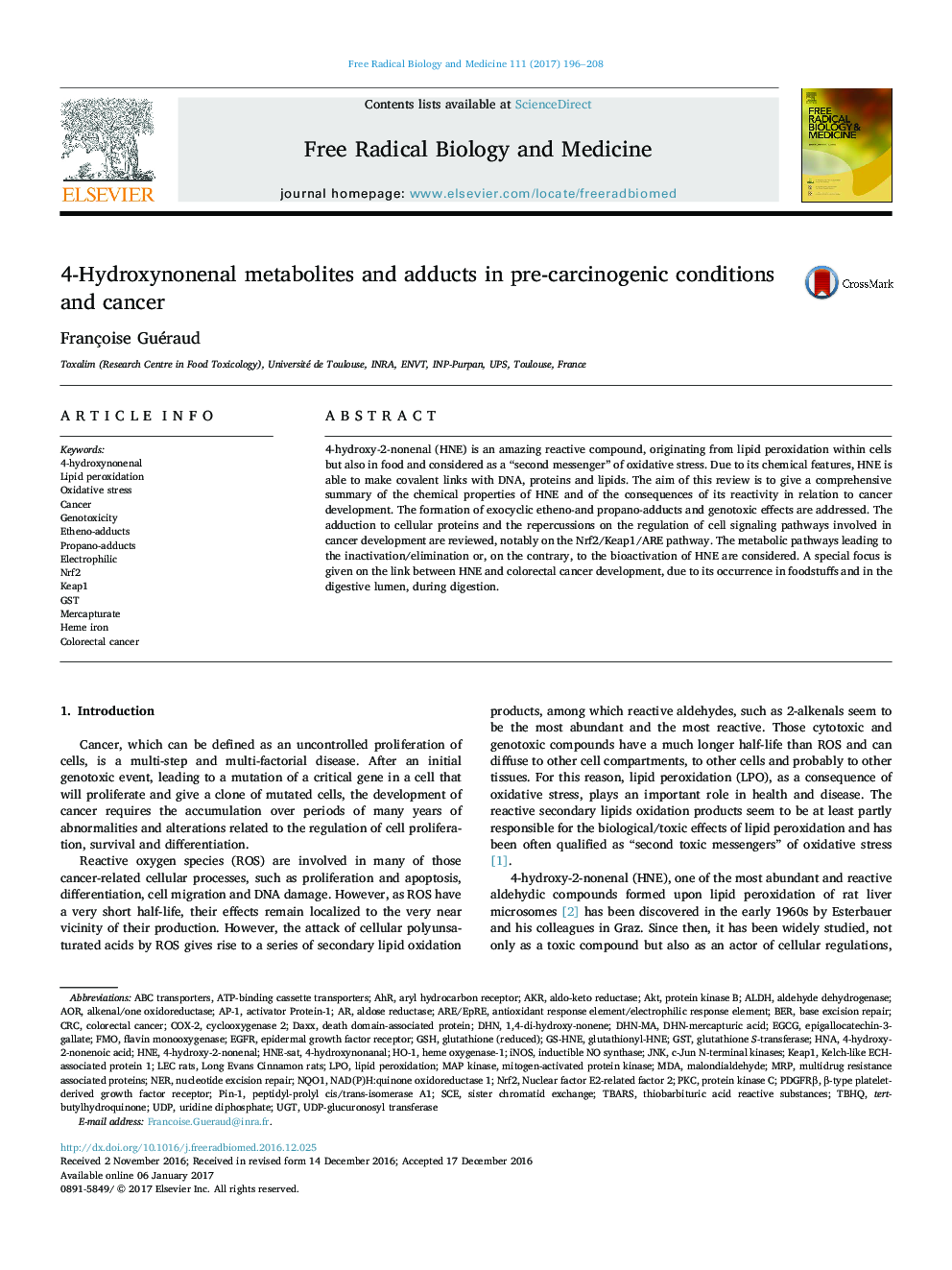| کد مقاله | کد نشریه | سال انتشار | مقاله انگلیسی | نسخه تمام متن |
|---|---|---|---|---|
| 5501644 | 1534932 | 2017 | 13 صفحه PDF | دانلود رایگان |

- Lipid oxidation product HNE has pleiotropic effects via adduction to proteins.
- HNE regulates many cellular pathways related to cancer.
- Nrf2 orchestrated HNE detoxification is central to determine HNE effects.
- Food borne HNE could play a role in red meat induced colorectal cancer promotion.
4-hydroxy-2-nonenal (HNE) is an amazing reactive compound, originating from lipid peroxidation within cells but also in food and considered as a “second messenger” of oxidative stress. Due to its chemical features, HNE is able to make covalent links with DNA, proteins and lipids. The aim of this review is to give a comprehensive summary of the chemical properties of HNE and of the consequences of its reactivity in relation to cancer development. The formation of exocyclic etheno-and propano-adducts and genotoxic effects are addressed. The adduction to cellular proteins and the repercussions on the regulation of cell signaling pathways involved in cancer development are reviewed, notably on the Nrf2/Keap1/ARE pathway. The metabolic pathways leading to the inactivation/elimination or, on the contrary, to the bioactivation of HNE are considered. A special focus is given on the link between HNE and colorectal cancer development, due to its occurrence in foodstuffs and in the digestive lumen, during digestion.
188
Journal: Free Radical Biology and Medicine - Volume 111, October 2017, Pages 196-208